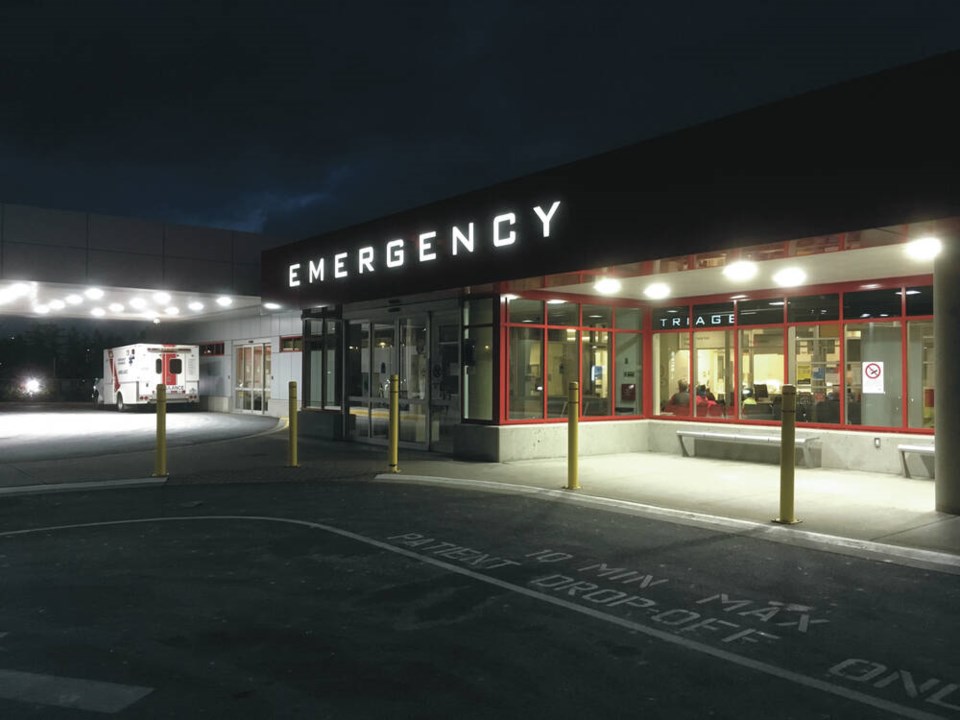A commentary by a family physician who has been working as a hospitalist in Victoria for 10 years.
I am a family physician working full-time in the hospitals of Victoria as a hospitalist (a hospital-based family physician).
Over the past 12 months, amidst the ongoing COVID crisis, our hospitals have also been dealing with the fallout of our collapsing primary care system. I was reminded of this last weekend when I admitted a vivacious 95-year-old gentleman to hospital. He was experiencing heart complications largely because he had been unable to renew his cardiac medications.
He has now spent over 50 hours in the emergency room waiting for a hospital bed. He had lost his family physician in September last year. Since then he and his wife have struggled to be seen at walk-in clinics. On several occasions he has spent many hours in line only to be turned away when the clinic reached capacity for the day.
It is absolutely unacceptable that in our province, with so-called “universal health care,” we are requiring 95-year-old patients to access primary care in this fragmented way.
There are an estimated 120,000 patients in Greater Victoria without a primary care provider. Due to the rapid decline of walk-in-clinics and family physician clinics offering after-hours care, these unattached patients inevitably land in the emergency rooms to access basic health care. It is not uncommon for patients to spend three days in the emergency room waiting for a hospital bed to open up.
The many UPCCs (Urgent Primary Care Clinics — commonly referred to by physicians as “Oopsies”) that were opened by our government have not improved access to primary care, as had been promised.
Not only have they not managed to attach many patients to a stable primary care provider, but they have also resulted in the closure of many walk-in clinics as well as other independent community family practices.
One of the aspects that I enjoy most about my hospitalist work is being part of an interdisciplinary team. Unfortunately, in the community outside of the walls of the hospital, most of my amazing family-physician colleagues do not benefit from such a team to help care for their patients.
The recent advent of primary care networks seems to have slightly improved patients’ access to social workers, nurses, dietitians and other professionals; however, this is still a far cry from true interdisciplinary team-based care.
There are a small number of clinics and groups of physicians in Victoria who have worked extremely hard to develop innovative models which allow them to offer excellent team-based primary care to their patients.
Examples of these clinics are the High Complexity Care Team in Eagle Creek pioneered by Dr. Spencer Cleave, as well as the soon to open Community Health Centre in the West Shore pioneered by Dr. Jennifer Ross. The province should be championing these successful clinics and enabling other physicians to replicate them.
Family physicians are specialists in providing primary medical care. They should be allowed to work in a team-based setting where they can focus on patient care.
Other provinces such as Ontario have been much more forward-thinking in their funding of team-based longitudinal primary care clinics. In these clinics, physicians focus on the medical care of their patients while social workers (and other allied health workers) use their unique skill sets to support patients.
There is ample evidence showing that investing in longitudinal primary care saves the health system money in the long run by lowering surgical costs, reducing ER visits and acute care admissions.
There is an urgent need for the government to work with family doctors to support the existing longitudinal primary care physicians who are struggling to continue to run their practices.
As a hospitalist, I am paid an hourly rate (a standard pay rate for all hospitalist physicians in the province). Most community-based family physicians, however, are being paid inadequate fee-for-service rates from which they have to pay their office overhead and run their own business.
They are unable to spend an appropriate amount of time with their increasingly complex and aging patients because they are having to rush through patient visits in order to cover their overhead.
There is an important place for family physicians, nurse practitioners and other allied health-care providers in providing excellent longitudinal primary care.
However, unless the province can find a way to ensure that longitudinal family physicians can see a future for themselves within this primary health-care system, patients such as the elderly gentleman that I admitted last week will continue to land in the emergency room when, in fact, all that he needed was a quick visit to his family doctor.



